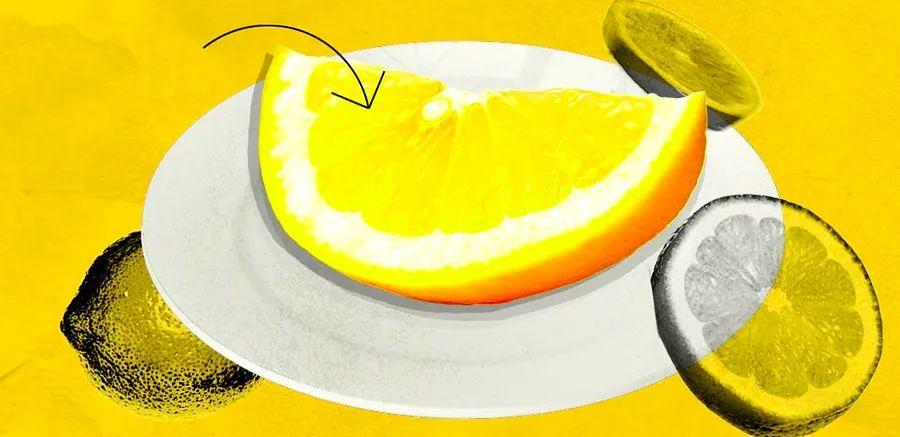How Lemons Keep Me Connected to My Mother's Syrian Roots and Culture

When I look back on my childhood, one thing stands out: lemons. I remember those scorching Alabama summers, sprawled on the floor of my bedroom, AC blasting, hoping for relief from the heat. I remember aimless drives in my friend's bright yellow Ford F-150, winding down back roads with 32 ounces of sweet iced tea sweating in a Styrofoam cup. And I remember the boredom, the kind that only small-town life can bring, where the nearest excitement was an hour's drive away.
Growing up in suburban Alabama in the early 2000s was challenging for me, an outsider from NYC with a Syrian-American mom and a family that didn’t fit in with local traditions. Things got even more complicated when I came out. I loved some parts of it, hated others, and eventually, I left. But there’s one thing I’ve kept — my memories of food. When you don’t go to church or football games, in the South, the next best thing is food. And there’s plenty of it: golden, crispy fried dishes, cheesy concoctions, and foods drowning in mayonnaise. Our town was near a military base, so we had small Korean and Thai communities, and once a week, my friends and I would gather in one of the three Mexican restaurants to devour piles of nachos.
But if I had to choose one image to represent my childhood, it would be lemons.
For anyone raised in an Arab family, lemons hold an almost magical significance. Their tangy brightness can transform any dish, harmonizing perfectly with garlic and parsley. In an Arab home, lemons are everywhere — hanging in baskets by the window, stored in the fridge, or squeezed into everything. I grew up hearing stories from my mom about how her Syrian father would rush into the kitchen to squeeze fresh lemon juice over whatever dish her English mother had made, be it meatloaf or roasted meat.
In the South, lemons are typically used for sweet tea or meringue pie. My friends’ moms always had lemon squares on the counter, wrapped in plastic. As kids, we set up lemonade stands on the front lawn, selling too-sweet lemonade made from powder, earning far more than we ever spent.
I loved those sugary lemon drinks and desserts. But I also craved the tangy, garlicky flavors of Middle Eastern cuisine. When I begged my mom to cook Syrian dishes for my friends and me, these two worlds collided. In the mornings, we'd grab sweet tea and biscuits from a nearby gas station, and by late afternoon, we'd all be gathered around the kitchen, helping my mom roll grape leaves and season kibbeh.
My friends were fascinated by Syrian food, with its complex flavors and textures. My best friend would carefully follow my mom's instructions to slice the kibbeh just right, while we chatted about school gossip. I loved introducing them to the foods I grew up with: the surprising bite of lamb-stuffed grape leaves, the crispy caramelized onions on top of mujadara, and the unexpected role of lemons. 'There’s lemon juice in it,' we’d explain, 'but you also need to squeeze fresh lemon on top,' making sure they had wedges on their plates.
Although citrus isn’t native to the Middle East, it’s been a foundational element in its cooking for millennia. In the 1960s, Lebanon’s citrus farms flourished, and today, areas like Tripoli continue to grow oranges and lemons. In the U.S., Middle Eastern grocery stores, like Brooklyn’s Sahadi’s, carry jars of preserved lemons and bottles of fragrant orange blossom water. Lemon is so ingrained in Middle Eastern cuisine that we hardly notice it—until we’re out of it. 'Of course we need more lemons. Three isn’t enough! What do you mean you only have the bottled stuff?' we ask.
Lemon wedges alongside a dish, delicate slices of lemon in a salad, or a pitcher of mint tea with lemon pulp floating in it — these are acts of love. In Syrian or Lebanese homes, large family gatherings are filled with the aroma of citrus, garlic, and sesame. When you share these dishes with someone, you're not just feeding them; you’re offering them a piece of your home and culture.
Introducing my friends to Syrian food was rewarding, but my favorite part was watching my mom’s face light up. Having dinner with us in our Southern kitchen took her back to family gatherings in Brooklyn, where multiple generations would crowd into a tiny apartment and pass around plates of hummus, babaganoush, tabbouleh, and grape leaves, all topped with fresh lemon. Plates would be passed around over and over until we were stuffed, then dessert would follow — though usually something store-bought rather than Middle Eastern. Afterward, we’d drink strong coffee, and my family would reminisce about our roots, debating who came to America first, which street they lived on, and which decade it all happened. And behind them, the forgotten lemon wedges sat in the sink, waiting to be discarded.
Evaluation :
5/5



